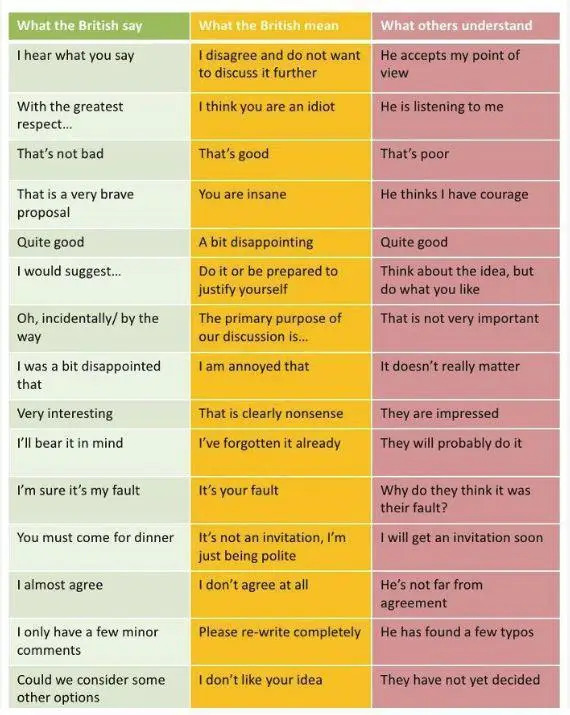
Brexit, “Make America Great Again”, Narendra Modi’s 2018 Davos speech about globalisation losing its lustre: do not let those things fool you.
In the 21st-century market place, every business now sells to a multicultural, multilingual audience — whether online or in a brick-and-mortar-shop. European societies are increasingly diverse, and more people than ever before live abroad for at least some time, if not permanently.
So, whether they respond to all customers in English or set up multilingual contact centres: companies have to consider the effect of intercultural communication on their customer service.
In this article, I explain 7 common conundrums that can get in the way when customers have different cultural backgrounds or speak different languages. It’s based on research by John Gumperz and Deborah Tannen; if you’d like to dive deeper into the subject, check out the recommendations for further reading at the end.
1. Cultures disagree about awkward silences
Most call guidelines we’ve seen include something along the lines of “avoid awkward silences.” But what exactly is an awkward silence?
According to Deborah Tannen, “people experience silence when they think there could or should be talk.”
Those expectations differ vastly between different cultures, even within countries. People in different parts of Finland, for example, find each other too silent or too talkative, and the same is true of inhabitants of different US states. Those kinds of judgements often feed into stereotypes about quiet people being stupid, or talkative folk being too pushy — which will affect Customer Satisfaction (CSAT), Net Promoter (NPS) and friendliness scores.
So, it’s impossible to come up with a hard and fast rule about what length of silence is OK — or whether advisors should, for example, be allowed to type silently during a phone call.
What to do about it:
- Train your service quality team in intercultural communication. It’s important that they understand the cultural bias they bring to their work.
- Train advisors, the quality team and performance coaches to listen closely to the customer and identify how much silence they’re likely to find normal. This is more an art than a science, and it sharpens people’s intuition so they have a better chance of doing the right thing.
2. Cultures disagree about acceptable conversation topics – and styles
Cultures differ in their acceptance of advice, storytelling and the sharing of personal experiences, as well as the use of irony, sarcasm and even questions. Not every kind of compliment can be paid in the same situation in every culture, and the rules for polite responses to such compliments vary as well.
It’s important to bear that in mind when creating guidelines to help advisors be more ‘engaging’ on the phone, in emails or live chat.
Some customers may get impatient when advisors share personal experiences to create rapport. Others may be less inclined to ask questions, so we need to watch out for indirect requests for information. Misunderstandings can lead both the customer and the advisor to negative assumptions about each other’s personality traits — when, in fact, their behaviour is based on cultural convention.
What to do about it:
- Collect information about your customers’ cultures. Geert Hofstede, for example, has conducted some very insightful research that can help you understand more about their backgrounds.
- Teach advisors a broad variety of ways they can engage the customer — from appropriate topics for small talk to choosing the right tone of voice.
3. Cultures disagree about how to signal turn-taking
Ever felt like you couldn’t get a word in sideways? In every spoken conversation, we use subconscious clues about pacing and pausing to determine whether the other person is done speaking and it’s now our turn.
To quote Deborah Tannen:
The person who expects a slightly shorter pause will take a turn first — filling and thus curtailing the pause that the other is waiting for. … Slightly slower partners accuse faster ones of not giving them a chance to talk and not being interested in what they have to say. Slightly faster partners accuse slower ones of not talking to them and not saying what’s on their minds.
Because this is such an automatic process, it’s very powerful in defining the relationship between callers and advisors — with potentially big effects on customer satisfaction scores.
What to do about it:
- Do a listening exercise such as this: pair speakers from different cultural backgrounds (for example, different regions in your country). Ask them to sit back to back and have a fluid conversation. Ask them to raise their hand every time they feel the other person does not let them speak, or when they feel compelled to fill an uncomfortable silence. How long does it take for the pair to achieve a good rhythm?
- In live chat, messages often overlap. Some customers do not like it because they interpret overlaps as a sign that the advisor is not interested in what they’re saying. Consider adding a note at the start of a chat conversation to let customers know such overlaps are not meant as interruptions — they just come with the technology.
4. Cultures disagree on how to signal interest
Ways of showing listenership can vary, too. In the contact centre, this mostly affects the so-called “listening noises” such as “u-huh”, “yeah”, “OK”, “mhm”, and so on. Similar messages appear in live chat conversations, for instance “ah, OK”.
Deborah Tannen conducted a study that shows those listening noises to be less universal than we might think. Cultures can have different expectations of their frequency, the loudness at which they’re uttered, and even the words or noises that should be used:
New Yorkers in [Tannen’s] study had an enthusiastic way of showing listenership — for example shouting ‘Wow!’ or ‘No kidding!’ This was understood as a sign of attention and encouragement by speakers who shared that style. But such loud responses frightened and confused the Californians — sometimes to the point of stopping them dead in their vocal tracts.
What to do about it:
- Pay attention to how the customer shows that they’re listening, and mirror their behaviour.
- If you come across some behaviour that you find strange, remember it could be a reaction to your own way of speaking — or just a cultural convention. It’s probably not telling you much about the character traits of that person.
5. Cultures disagree on tone – a lot
Intonation — pitch, pitch variation, rhythm, loudness, for example — is the hardest part of learning a dialect or a foreign language. And it’s essential for others trying to understand how we mean what we say, because intonation conveys our attitudes and emotions.
John Gumperz tells the story of complaints about ‘rude’ Indian and Pakistani servers at a staff cafeteria at Heathrow Airport.
Were those complaints discriminatory? Or was there something else going on?
Gumperz recorded the interactions between servers and customers on tape. When they all listened to the recordings together, they found that British and Asian staff used different intonation to ask if the customer wanted gravy. They all said exactly the same thing: “gravy”. But the British servers used question intonation (“gravy?”), whereas the Asian staff used a falling intonation (“gravy.”).
The falling intonation was interpreted as rude — ‘here’s some gravy, whether you want it or not.’
Gumperz also conducted research revealing that loudness can be a source of misunderstanding between speakers of British English and Indian English. In British English, loudness is often a sign of anger, while speakers of Indian English also use loudness simply to show that they’d like to say something.
While these examples centre on two specific varieties of English, the underlying phenomenon is far more widespread. In contact centres, we’ve seen misunderstandings occur between English speakers from the UK and eastern Europe; the United States and the UK; and German speakers from Germany and Austria — to name just a few.
What to do about it:
- Do you have foreign-language speakers on your team, or speakers of a different variety of your customers’ language? Consider investing into some intonation training. Actors, voice artists, radio hosts and language teachers often offer such training as part of their services, and it’s a fun and effective way to improve customer satisfaction. (You can contact us if you need that kind of training, too!)
6. Cultures disagree on directness
Levels of acceptable directness and indirectness are probably the best-known cultural differences.
Just take a look at this popular online meme about British indirectness (attributed to various sources):

German and Dutch people are often perceived as rude because of their more direct style of speaking, compared with some speakers from Britain, Arab countries or the Mediterranean, for example. Of course, that’s the last thing we want to happen in a customer service environment, so an awareness of those triggers is essential.
What to do about it:
- Overviews like the one in my example are not only funny. They also make a great start for developing an understanding of the kind of indirectness that’s ‘normal’ in the relevant cultures. Train teams to grasp the meaning of common indirect phrases so they can use them naturally with customers.
- Most importantly, do not take directness personally — and please do not think that people who speak more indirectly are somehow less trustworthy or weaker.
7. Cultures disagree on how to structure a text or conversation
Finally, there are also cultural differences to how we structure a conversation, email or product review as a whole. As a result, the reader or listener may not get the point. Every culture seems to appreciate a beginning, middle, and end – but what happens at each stage can differ a lot.
Indian speakers may, for example, not emphasise their main point but the sentence directly before it. And in some cultures, an argumentative essay is expected to be far more repetitive than we’re used to in northwestern Europe.
What to do about it:
- When you create structural guidelines for customer care calls or emails, consider the cultural conventions of your customers and make localised tweaks.
- Teach anyone whose job it is to judge advisor performance about the cultural relativity of communication so they can bring awareness to their work.
- Instead of a ‘one-size-fits-all’ box ticking exercise, use a more fluid kind of quality assessment that leaves room for true rapport and engagement between advisor and customer.
Our experience tells us that even native speakers cannot always avoid those conundrums.
If they’re employed abroad, over the years it’s easy for them to lose touch with what it’s like to be a consumer in their country of origin.
Plus, many languages are spoken in more than one country: just think of Portuguese, which is spoken — with large and small variations — in places as culturally diverse as Portugal, Angola and Brazil (among others). Even within a relatively distinct geographical area such as Germany, different regions use language differently as part of their cultural identities.
Add to that different age groups, class, and gender, and you’ll see that intercultural communication affects all of us.
Further reading
John J. Gumperz: Discourse Strategies. Cambrige: Cambridge University Press, 1982.
Deborah Tannen: “The Pragmatics of Cross-Cultural Communication.” Applied Linguistics 5 (1984):3. pp. 189–95
Geert Hofstede et al.: Cultures and Organizations: Software of the Mind. McGraw-Hill Education, 2010 (you’ll find a quick summary of the book here.)